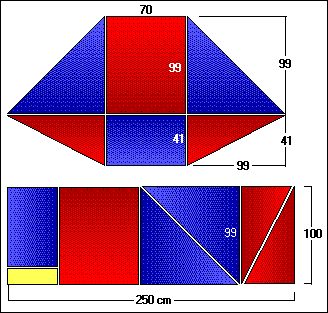

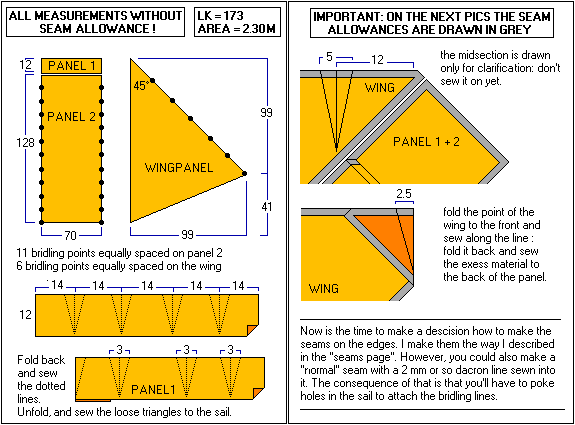
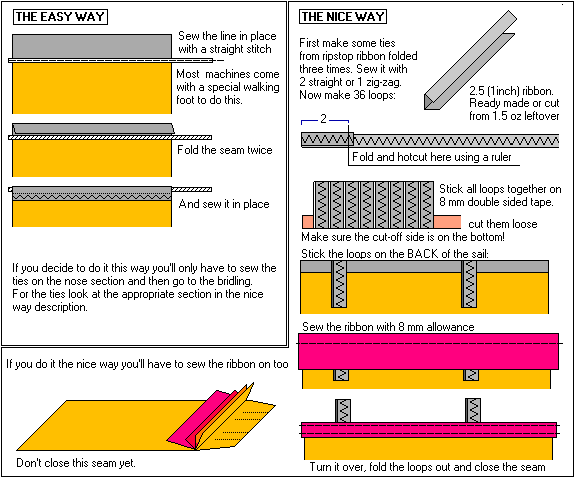
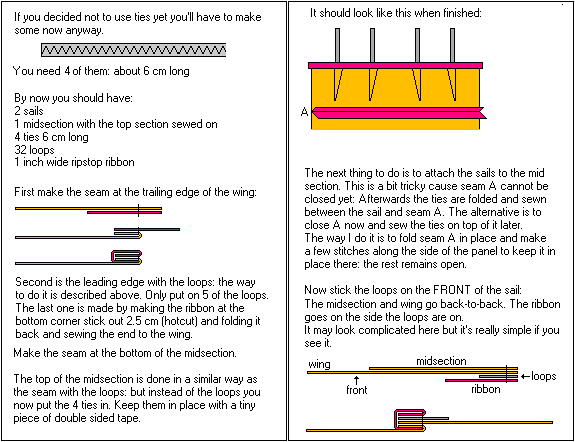
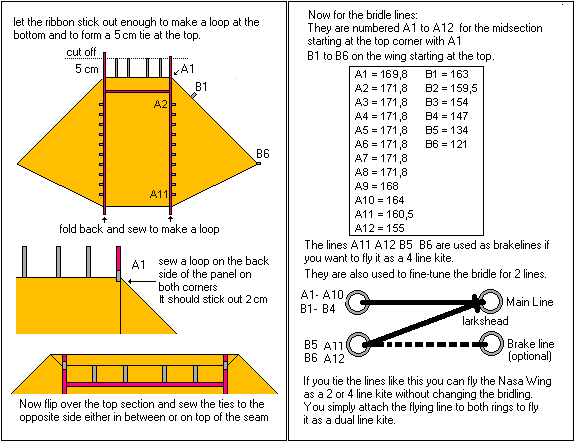
After building a lot of them, the order in which I sew them has changed. Now I do it in the following order:
1- seam with loops on the leading edges, and seams on the trailing edges of the wingsection.
2- join the upper and lower wingsections: make sure you leave enough ribbon at the tip to make the loop.
3- join the panels in the center, only fold the bottom seam of the 12 cm panel: later on the ties are sewn in the seam.
4- mark the 4 delta's of the center panel, sew them, and sew the center leading edge seam with the ties. (this is the "hardest" part of the kite)
5- join the wingsections and centerpanel (seams with loops). Make sure there's enough ribbon left for the loops at the bottom and the 5 cm tie on the top corners.
6- sew the delta's in the top corners of the wing (centered between top corner and B1).
7- sew the ties in the seam that's still open.
This is the easiest way because you keep the kite as flat as possible while sewing.
